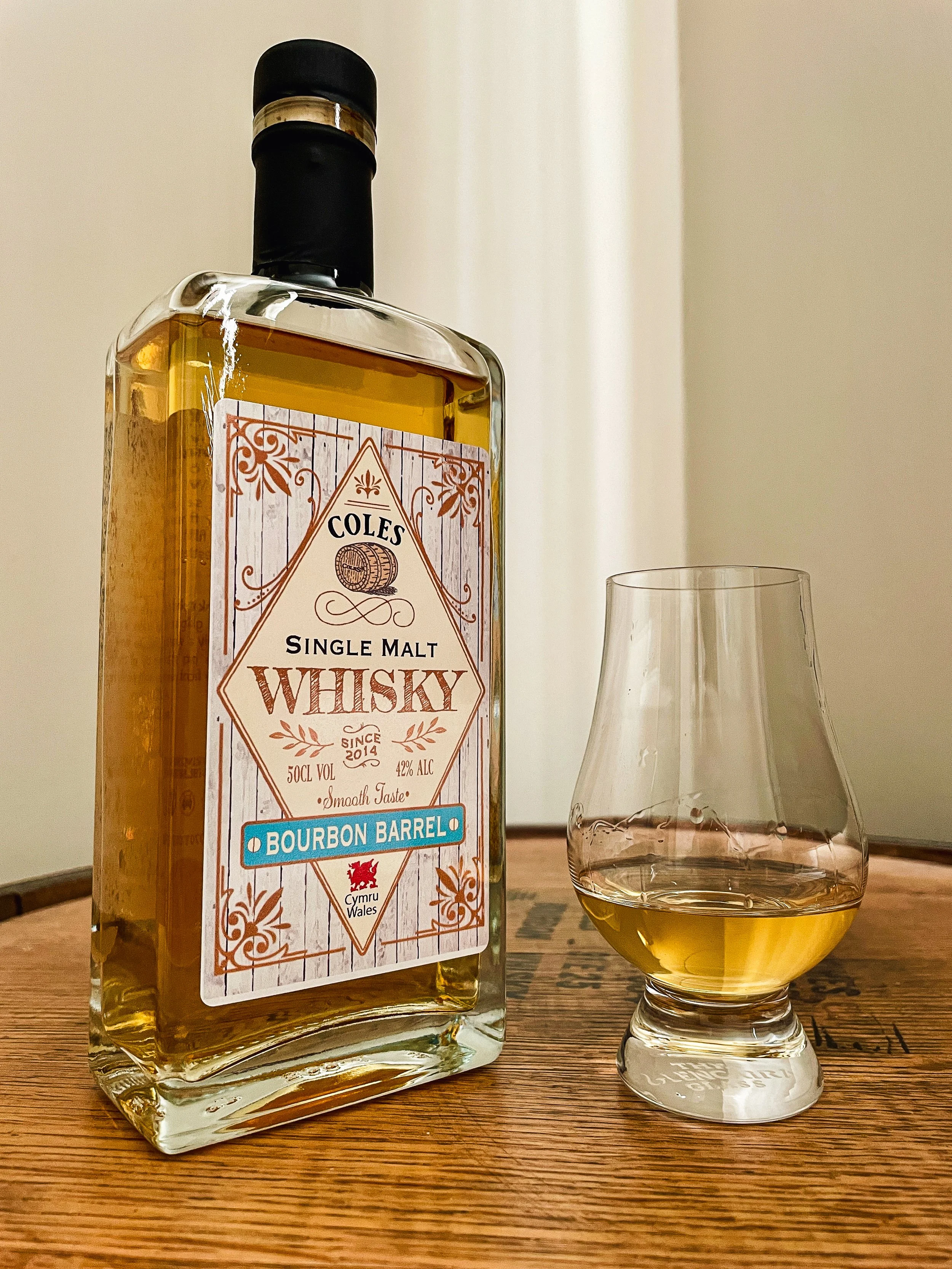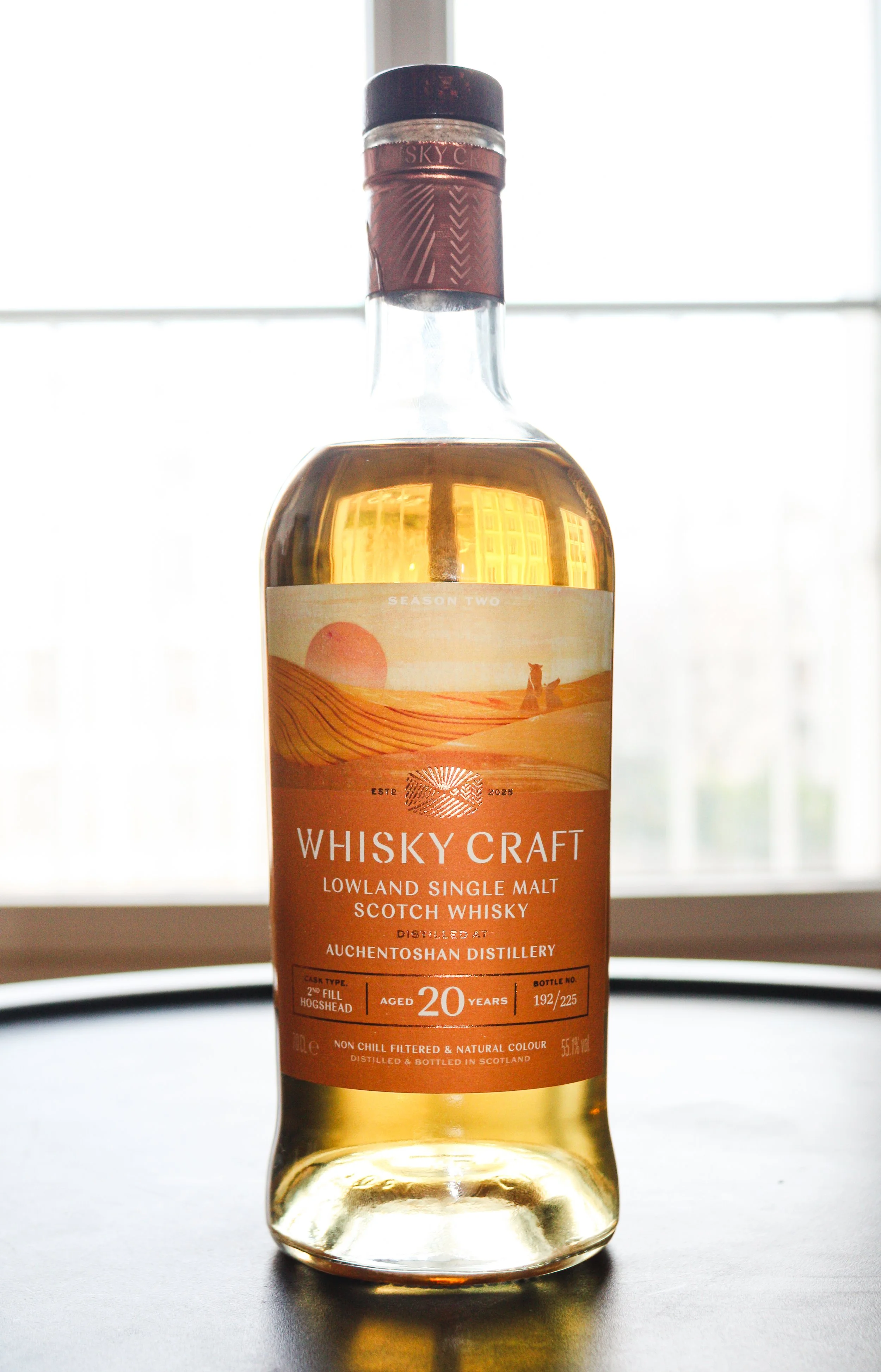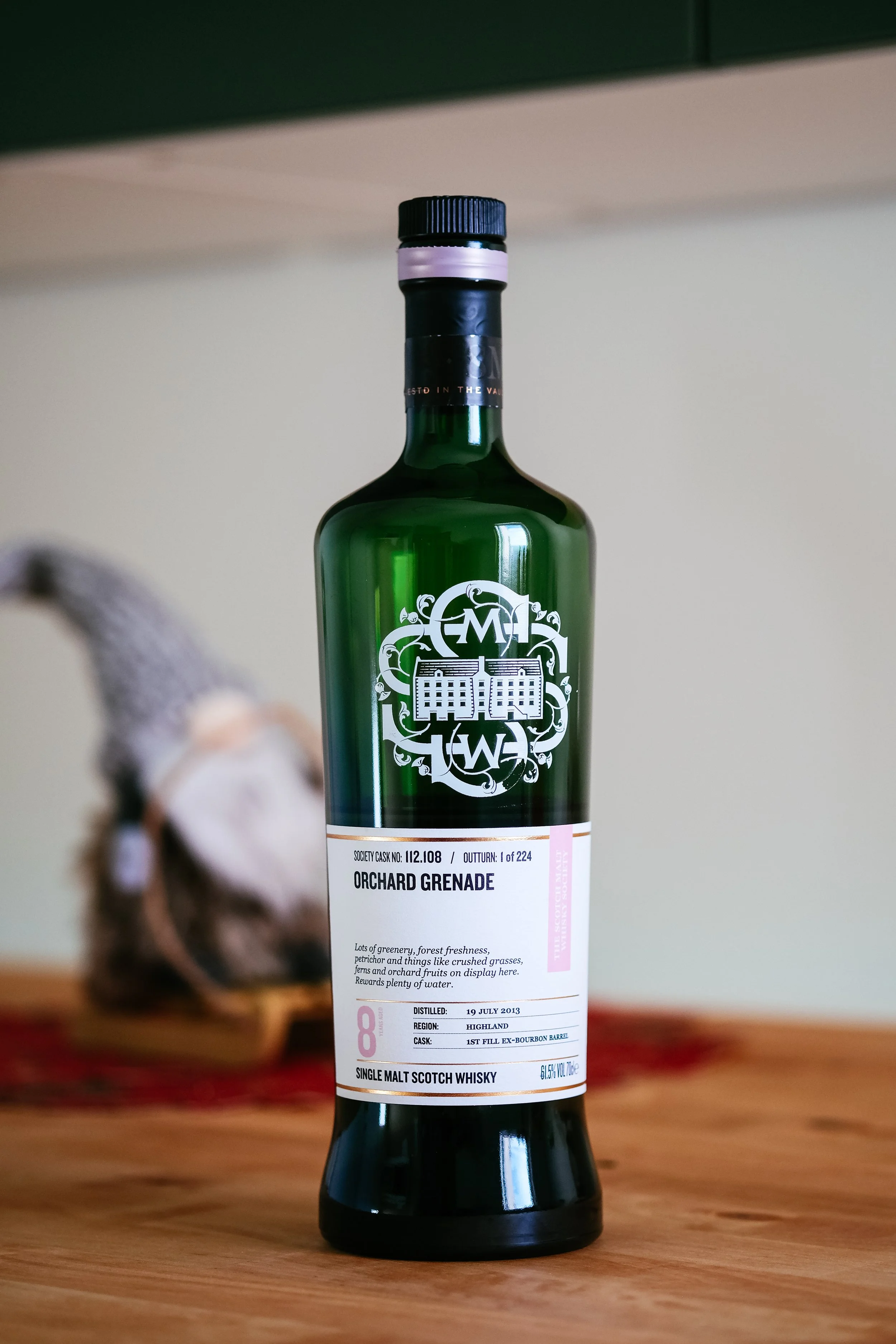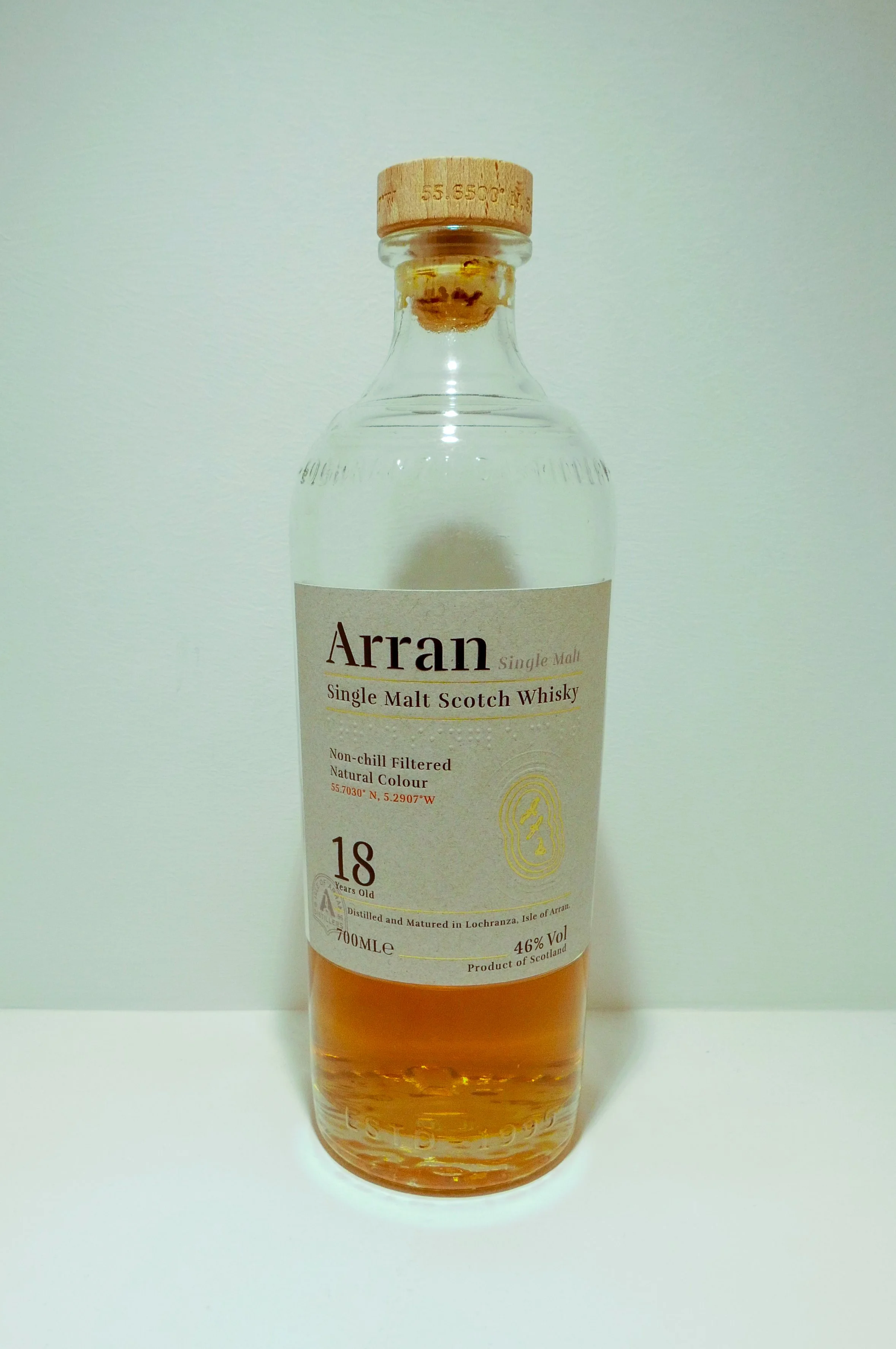Coles Single Malt Welsh Whisky
Official Bottling | 42% ABV
Score: 5/10
Average. In a good way.
TL;DR
Pleasant and easy, but needs more oomph!
Why has Welsh Whisky faltered?
Spring is well and truly in the air in my corner of Wales. The sun is shining, the vivid white blossoms - which sadly last only a matter of days - are blooming and the oak we planted from an acorn more than a decade ago is displaying the green shoots of recovery following our long winter.
The thermometer is briefly back into the low 20s and drams in the garden are back on the agenda. At least, at the time of writing they are; we’re never too far away from the next rain shower or chilly snap. I am sitting in the garden as I write this though, before a combination of the sun’s unrelenting rays and a hot laptop force me back inside before I melt into the wicker.
At this time of year my sherry cask whiskies are shoved to one side as the bourbon casks dominate. Whilst cask strength whiskies are still on the agenda, more often than not I am reaching for lower ABV too, pouring myself a healthy treble, and not moving from my spot for a couple of hours. Who can be bothered getting up to pour another?
Still, whatever dram I have in hand, it will almost certainly be Scotch. I’m not beholden to it, but it is still very hard to beat when it comes to bang for your buck and availability. Welsh whisky doesn’t feature on my shelves as much as I would like it to and England is outgunning it at present.
If there is one problem Welsh whisky has which makes it difficult for consumers to connect with it as a category, it’s scale. Penderyn came along at the turn of the millennium, several years before England had its first of now more than fifty modern day distilleries. In theory, Wales should be ahead of England, but whereas England is experiencing a boom as a whisky making nation, Wales is still struggling to get a foothold in the psyche of many whisky folk.
Of course, Wales is a smaller country. The latest census in 2021 tells us that more than fifty-six million people live in England - compared to just over three million in Wales. Then again, similar comments could be made towards Scotland and its population of just over five million, but it has a greater history and heritage when it comes to whisky production. In England and Wales I suspect it’s more of a numbers game and the greater the population that exists, the greater probability someone is going to want to build a distillery.
Wales now has eleven distilleries. However, three of those are Penderyn - and they have temporarily stopped production in Swansea - and only six distilleries have released whisky up to this point. With England on fifty-five even my basic maths can work out Wales has more distilleries per capita than England. Everybody has heard of Penderyn, many will have heard of Aber Falls and noticed their entry-level offering mixing it with other budget whiskies in UK supermarkets, but how many have heard of Anglesey Môn, Dà Mhìle, In The Welsh Wind, Myrddins, Cardiff, Hensol Castle or the one I am reviewing today – Coles?
These are small scale operations with tiny outputs which don’t allow them to bring a series of bottles to the market at decent volumes. It’s all single casks and very small batches and many of them at prices which are hard to get excited about. Would you take a chance on a young, non-age statement whisky at nearly £100 a bottle? Some will, but not many when we are spoiled for choice, for quality and affordable whiskies.
What Wales really needs is a handful of distilleries that are able to produce at a scale which allows for a core range to be formed. Penderyn is the only distillery doing this at present. Aber Falls surely has the capacity to do so, but has chosen to focus on low-cost supermarket whisky and the occasional release at higher strength. If they could bring us two or three always available releases at 46%+ for around £40-50 it might help whisky drinkers to connect with the distillery and give Welsh whisky more of an identity with the wider whisky buying public. They should get involved online, and at whisky festivals, and encourage people to try their product. For me, that seems to have been the key to success for many new distilleries in both Scotland and England.
Review
Coles Single Malt, Welsh Whisky, ‘Bourbon barrel’ matured (Jack Daniels barrels), 42% ABV. 50cl.
£30. Direct from the distillery only.
Coles is a difficult distillery to find much information about. It only seems to be sold online from their website and from one or two other small retailers, so you would be forgiven for never noticing it. They haven’t updated their Instagram for almost a decade and I don’t recall seeing them at the Wales Whisky Festival last year. Marketing to the wider public doesn’t appear to be a high priority.
It was built in the grounds of a beautiful fourteenth century thatched pub in the south-west county of Carmarthenshire and has been operating for more than a decade. The whiskies are non-age statement, but the website says they are matured for a minimum of five years in Jack Daniel’s barrels. They call them bourbon casks on the label, but technically speaking they are Tennessee Whiskey casks.
As a pub which brews its own beers, they also do their own mashing, fermentation, distillation and maturation on site, with water being provided from their own well. What makes it even more of an interesting proposition is the price of the whisky. You have a choice of 5cl, 20cl, 50cl or 70cl bottles of the two whiskies in their range. One is an organic which has been matured in Welsh red wine and American whiskey casks, or the one I am reviewing today, which is simply matured in those Jack Daniel’s barrels.
I decided on a 50cl bottle for the very fair price of £30 plus another £9.95 for the delivery. It came packaged in a box that previously housed a handheld welding machine. I mean, use, re-use and recycle by all means, but it makes me think they aren’t sending out too many bottles on a weekly basis. The ABV is fairly low at 42%, but I think they bottle on site and would be surprised if any chill-filtration took place at such a small-scale distillery. It doesn’t mention, but I also doubt they would be adding any colour. Still, it’s frustrating that these details aren’t mentioned explicitly.
Score: 5/10
Average. In a good way.
TL;DR
Pleasant and easy, but needs more oomph!
Nose
Greasy chip shop paper. Some might describe it as wood or even cardboard, but vegetable oil is there and turns it into a great note. It is interlaced with acidic sour apple, peach iced tea, fresh cut grass, bread dough, sugared almonds, vanilla and coconut.
Palate
Light and approachable. Initially sweet apple and creamy vanilla, before lemon juice brings a sourness and bitterness. There’s ginger ale, light oak and salt. It doesn’t have the same range of flavours on the palate as on the nose, but it’s light, fruity and well balanced. It finishes with cream, oak and bitter lemon.
The Dregs
This is a pleasant whisky that I’m happy to have picked up. I considered bumping this up to a six when factoring in the value, but a perfectly solid five seems like a right score when comparing it with other whiskies on the market at a similar price point.
I would love to try a higher strength version as I think the palate may have held up a little better and maybe had a little more depth. Regardless of that - I am keen to pick up a bottle of the organic release next and see how that compares.
Score: 5/10
Tried this? Share your thoughts in the comments below. RT
-
Dramface is free.
Its fierce independence and community-focused content is funded by that same community. We don’t do ads, sponsorships or paid-for content. If you like what we do you can support us by becoming a Dramface member for the price of a magazine.
However, if you’ve found a particular article valuable, you also have the option to make a direct donation to the writer, here: buy me a dram - you’d make their day. Thank you.
For more on Dramface and our funding read our about page here.


































